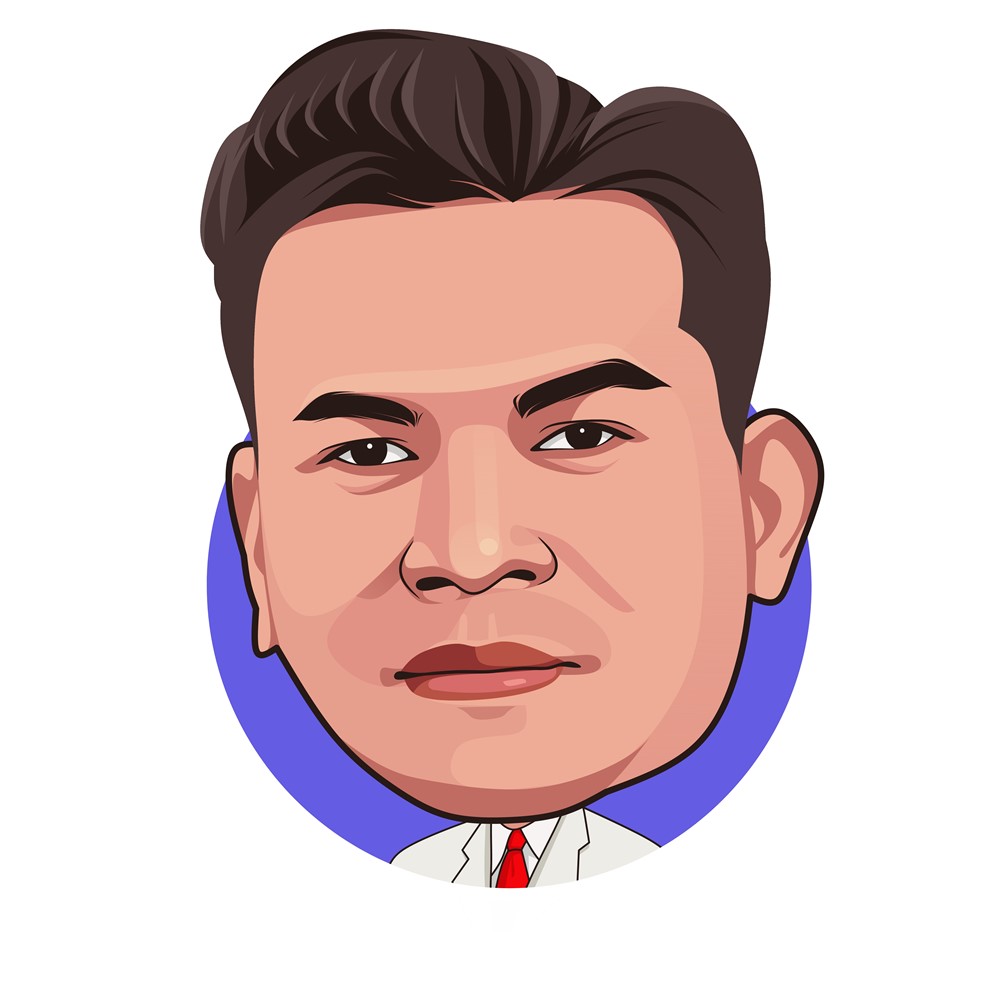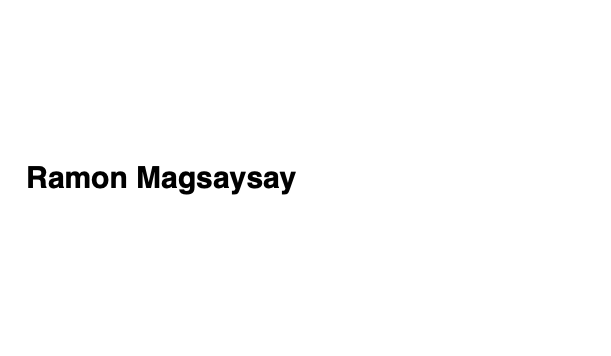
Ramon Magsaysay was a Filipino President. He served as the president of the Philippines from 1985 to 1995. His military career, relationship with Moises Padilla, and rehabilitating Huks are all discussed in this article. It is an excellent resource on the life and times of a famous President.

In the early days of World War II, the Philippines was occupied by the Japanese. A group of peasant farmers known as the Hukbalahap was formed to resist the Japanese invasion. This guerrilla group extended its fight into a rebellion against the Philippine government, which was eventually put down by President Magsaysay. In recognition of the Hukbalahap’s efforts, a monument is planned in Cabiao, Nueva Ecija.
After the war, the Hukbalahap was reconstituted by the Communist Party of the Philippines (PKP) as the armed wing of their revolutionary party. Their full name is Hukbalahap Mapalaya ng Bayan (People’s Liberation Army), and they are commonly referred to as the Huks by English-speaking media.
The Huk movement operated from a stronghold in Pampanga province in Luzon Island. The Huks failed to achieve their goal of implementing land reforms, and the group split into factions. The Huks later merged with other insurgent groups and continued to be active in the Philippines until the 1970s.
The Huks used guerilla tactics to increase their numbers. They would sometimes threaten the families of rival guerrillas to force them to join them. Eventually, they had a total of 1,047 men.
The Philippines’ communist leadership was enraged when the Hukbong Bayan Laban na Hapon (People’s Army – a guerilla group under Ramon Magsaysay) approached the city. In response, the Communist leadership decided that the time was right for power grab.
In the late 1940s and early 1950s, the Huks had struggled to regain their pre-war conditions. They had faced hostility from landlords and Filipino soldiers. Many were arrested under the United States’ orders for disarmament. Many Huks were also targeted and hunted down in their own villages.
Quezon reformed the Armed Forces of the Philippines and tapped retired US Army General Douglas MacArthur to serve as their commanding officer. MacArthur was the only non-Filipino citizen to lead the Philippine forces. MacArthur modeled the army after the Swiss citizen-soldier system. MacArthur estimated that it would take ten years before the Filipino army would be able to deter foreign aggression.
Taruc was a nationalist and advocate for civil liberties and workers’ rights. Taruc sought and won a seat in Congress but was subsequently ejected after opposing parity rights. Taruc spent nearly two decades in jail after the ejection, but remained dedicated to his cause throughout his life.
Ramon Magsaysay’s military career began in the late 1930s. He joined the Filipino 31st Infantry Division in the midst of World War II. After his election to the Philippine House of Representatives in 1946, he was appointed by President Manuel Roxas as Chairman of the Committee on Guerrilla Affairs. His work helped the government secure the passage of the Rogers Veterans Bill, which provided benefits to Philippine veterans. He was re-elected in the “dirty election” of 1949 and served as the chairman of the House National Defense Committee.
After completing college, Magsaysay worked as an automobile mechanic and a chauffeur before joining the Philippine Army. His service included leading guerilla forces against the Japanese in World War II. He later went on to serve as a member of the House of Representatives and was appointed Secretary of National Defense by President Quirino.
After the end of World War II, the United States recognized the Philippines as an independent nation. Magsaysay’s political career followed in a succession of posts, including military governor of Mindanao and president of the Philippines. He was also a leader of the Hukbong Bayan Laban sa Hapon, one of the most prominent guerrilla outfits of the time. Magsaysay’s military career continued to develop even after the Philippines gained independence from the Japanese.
Magsaysay was a native of Zambales Province in western Luzon. He attended the University of the Philippines and Jose Rizal College. He married his wife, Luz Banzon, in 1933. In 1941, after working as an automobile mechanic in Florida, he joined the Philippine Army as a mechanic. He was drafted into the Pacific War, and was caught on the Batan Peninsula during the Japanese invasion of the Philippines.
In the 1950s, Magsaysay’s military career took a different turn. As Secretary of National Defense, he worked closely with the United States to defeat communist guerrillas. In addition, he was instrumental in helping to create the Southeast Asian Treaty Organization (SEATO), or Manila Pact of 1954, a group of nations aimed at defeating communist-marxist movements in Southeast Asia. In 1957, he was awarded the Ramon Magsaysay award, which is considered to be the Asian equivalent of the Nobel Prize.
Ramon Magsaysay’s relationship with former guerrilla fighter Moises Padilla is a controversial one. In 1949, when the Magallon elections were scheduled to be held, Padilla was a candidate. He was advised by his political rival to drop out of the race but continued his campaign in the hopes of securing military protection from Magsaysay.
In his defense, Lacson claimed that he did not intend to kill Padilla but only manhandle him, which he said was the truth. He disclosed his plan to friends, including Enriquez, who was overheard. The plan was to have Padilla arrested. But Lacson’s statements and actions revealed his intention to kill Padilla.
Ramon Magsaysay and Padilla were married in 1997, but their relationship was strained. Padilla’s wife, Moises, was a friend of Magsaysay’s. The pair had a close relationship, but the two had fallen out because of the former’s jealousy.
Magsaysay’s relationship with MoisesPadilla came to a head after his wife, Esperanza Ablao, had a meeting with a Nacionalista chieftain. She had asked Col. Mascardo to send Captain Marcial B. Enriquez to verify Padilla’s arrest. The pair then went to the Talisay house of appellant Governor Lacson, where Enriquez observed a conference. At that time, Mayor Tabina and Mayor Paderes Verde were also present.
After the mayoral election, Magsaysay, who was the Defense Secretary, sought military protection for Padilla. Later, when he was beaten and tortured, Lacson’s men declared in the town plaza that this is what happens to people who oppose them. Then, Magsaysay went to Negros Occidental, where he personally carried Padilla’s body to the morgue.
Padilla’s captors said he should be brought to Isabela before dawn. They also pointed out that Padilla was wearing a blood-stained shirt and a bruise on his forehead. They said he was limping. They then asked him to drink a few drinks for himself and Paco Esteban.
After the Magsaysay resignation, Garcia assumed the presidency. The president and Padilla had a long-term relationship. Both of them fought for the Philippines, and they met frequently in their later years.
The President of the Philippines, Ramon Magsaysay, tried to integrate his military campaign with civil resettlement projects to encourage the Huks to surrender their arms. He believed that a large number of the Huks were unaffiliated and had no ties to the central government. He formed the Economic Development Corps (EDCOR) in 1950 to provide better treatment to captured Huk guerrillas. The EDCOR was placed under the direct supervision of the Philippine Chief of Staff, and it was hoped that this would encourage the Huks to return to mainstream society.
Magsaysay met Truman at a Washington reception held in honor of a visiting secretary of national defense. Magsaysay came to the United States to get support for his government and was met by Truman. The two men grew close and remained in close contact until Magsaysay’s death in 1957.
As Secretary of Defense from 1950 to the spring of 1953, Magsaysay’s efforts to reestablish the Philippine military helped subdue the Huks and rehabilitate many Huks. His success in these efforts earned him the support of General Romulo, who had previously served as the UN Secretary General and as Secretary of Foreign Affairs of the Philippines. He had received the Pulitzer Prize for distinguished correspondence in 1941.
The Economic Development Corps was another initiative begun by Magsaysay, while he was Secretary of National Defense. This program was designed to rehabilitate Huk soldiers and transform them into economically and politically independent citizens. As Magsaysay’s administration went on, the settlements began to accept civilians in large numbers. The program was supposed to improve agricultural planning, but it was also overstaffed, with many of its policies aimed at ensuring the Huks’ economic independence.
Magsaysay is of the people, by the people and for the people. His humble origins and unspoiled nature set him apart from many political personalities of the past. He is in tune with the rhythm of life at the grass-roots level in the Philippines. While his lack of guile and unadorned political speeches made him an object of criticism, the people recognized this in him.
As the President of the Philippines, Magsaysay is keen on rehabilitate the Huks. He has a goodwill tour to the U.S. and Mexico and visited various places, including Washington, D.C., and New York City, as well as Walter Reed Hospital. In addition, he spoke at the annual convention of the Lions International in Mexico City.
Max Ernst Among the most famous artists of the twentieth century, Max Ernst was a
Angelina Jolie DCMG – An Icon in Hollywood Whether you love her as an actress
Barack Hussein Obama II Barack Hussein Obama II served as the 44th President of the
A Brief Look at Ben Affleck Benjamin Affleck is a well-known American actor and director.
Alicia Keys Alicia Keys is a famous American singer, songwriter and pianist. She was born